
|
||||||||||||||||||||||||||||||||||||||||||||||||
|
|
Gran Sasso
GRAN SASSO E MONTI DELLA LAGA NATIONAL PARK Basic Information: How to Get There : By car: the Gran Sasso area can be reached via the highway A24, while the Monti della Laga area is closer to the Rieti region and can be reached with the freeway SS 4 freeway as far as Amatrice, Accumoli and Arquata del Tronto. For the South-West, take freeway SS 17 from L'Aquila towards Navelli and from here take freeway SS 153 up to Valle del Pescara. The area South-West of the Park is the more difficult to reach due to winding roads which are taken from Valle del Pescara up to the mountain. By bus: the major cities are connected with the towns near the Park by various bus lines: the ARPA line from L'Aquila, Teramo and Pescara; the COTRAL line from Rieti. By train: train service only goes as far as L'Aquila or Teramo.
Other Park facilities include: Itineraries: There are numerous possibilities for excursions in the Park area and, for this reason, it is necessary to obtain guidebooks and updated maps of the entire region. The following trails pass through the Park: the Sentiero Italia (Italy Path), the Sentiero dei Quattro Vada (panoramic), and the Sentiero del Centenario (mountainous).
Another one goes through the Macchie Piane and another is located in Santa Maria Apparente near Campotosto. The Gran Sasso area can be visited starting from Prati di Tivo and from Campo Imperatore using the shelters and campsites set up by the CAI (hiking club). There is also a trail to the peak, with a route enabling visitors to see many beautiful plant species and the breathtaking landscapes of the Park. Information on the Reserve at Lago di Penne, located within the National Park, can be obtained from the Park Authority or directly from the Reserve Management.
Park Outline: Part of a single protected area since 1995, thanks to a victorious long battle fought by environmentalists. The battle preserved the area from devastating projects of ski resorts which were mostly planned in the Teramo area in past years. The enormity of the protected area and the large number of towns involved are a great challenge for the recently established Park Authority. The enormous mountain range that makes up the Park is located in the Central Apennines. There are actually two distinct rock formations: Gran Sasso, which is entirely situated within Abruzzo, and Monti della Laga that spans three different regions: Abruzzo, Lazio and the Marche. Within the Park's borders are located the Regional Nature Reserve of Gole del Salinello (since 1990), the State Reserve of Lago di Campotosto (since 1984), the Regional Nature Reserve of Voltigno-Valle d'Angri (since 1989), the WWF Oasis of Lago di Penne (in collaboration with the Region).
Gran Sasso is the highest mountain in the Apennines. Corno Grande reaches a peak of 2.912 metres and many others are over 2.500 metres in height. Monti della Laga are perhaps less well known and, also for this reason, are the most intact mountains of the entire Apennine chain. All of the main peaks reach about 2.500 metres and Monte Gorzano (2.458 m.) is the highest in Lazio.
The two rock formations are geologically different. Gran Sasso is made up of calcareous and dolomite rocks as well as marly-sandstone rocks; consequently, the karstic phenomena has produced underground shallows, dolines and caves. On Gran Sasso occurs the only Apennine glacier, the Calderone, at 2.775 metres located at the foot of Corno Grande; it is the southernmost glacier in Europe. Plains and valleys alternate between the peaks, such as Campo Imperatore, Val Mavone, Vallone d'Angora and Fosso Chiarino. Monti della Laga, compared to other Apennine mountains, has the characteristic of being mostly made of tertiary sandstone, a sedimentary rock less pearmeable than limestone, which led to the development of a complex surface water system, with many streams and waterfalls (Valle delle Cento Cascate-the valley of the water falls, Volpara, Tordino, Barche, Prata).
Wildlife: The Gran Sasso altitude prairies and rock debris are rich in species and many species can be recorded even in a small patch. The tree limit is at a lower elevation (at about 1.600 metres) due to centuries of logging undertaken to create new pastures. The most common species is the Beech, sometimes associated with the rare Silver firs; Oaks are abundant at lower elevation. Being the Monti della Laga wild mountains, the vegetation in the valleys and on the mountainsides is well preserved. Turkey oaks, Sweet chestnut trees, Beeches and Silver firs are present, together with many wildflowers.
Its recent establishment as a National Park will hopefully bring an end to the declining of animals species and number that has occurred over the past years.
History and Culture: The development of a cultural landscape of the National Park of Gran Sasso and Monti della Laga began with the Neolithic shepherds. This landscape was carefully designed over centuries by the presence of local communities, sheep-tracks, animals' pens and religious art. Important medieval settlements, well located in the natural environment, today surround the Park.
The Church of S. Maria della Pieta', located on a peak between the medieval town of S. Stefano di Sessanio and the above-mentioned castle of Rocca Calascio, is noteworthy. Special mention goes to the hermitages of the Gole del Salinello and in the Grotta di S.Angelo, which demonstrate the centuries old usage of the territory through the well-preserved traces of prehistoric inhabitants.
Not to miss : The Grotto of Stiffe : Previously closed for safety concern is now once again open to the public.
The Park also contains various agricultural projects, some of them linked to the antique farming heritage of the area, as well as top quality products made from traditional recipes. The Gran Sasso area has lentils from Santo Stefano di Sessanio, cicerchia from Castelvecchio Calvisio, saffron, red garlic, marcetto of Castel del Monte, pastinaccio from Capitigliano, roscetta apples from Montereale and pecorino sheep cheese of Farindola.
National Parks of : | Abruzzo & Molise | Gran Sasso | Cilento & Vallo del Diano | Vesuvio National Park | Gargano | Calabria | Pollino | Apromonte | Asinara | Maddalena |
|

|
||||||||||||||||||||||||||||||||||||||||||||||
|
||||||||||||||||||||||||||||||||||||||||||||||||

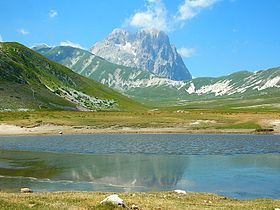 In Brief : The Gran Sasso and Monti della Laga National Park is one of the largest in Italy, with five provinces districts within its borders. The Park Authority has worked effectively to enhance accessibility to a widespread public. In fact, all of the 38 structures, including offices and service areas are accessible to visitors with mobility limitations such as children, elderly people and people with disabilities.
In Brief : The Gran Sasso and Monti della Laga National Park is one of the largest in Italy, with five provinces districts within its borders. The Park Authority has worked effectively to enhance accessibility to a widespread public. In fact, all of the 38 structures, including offices and service areas are accessible to visitors with mobility limitations such as children, elderly people and people with disabilities. 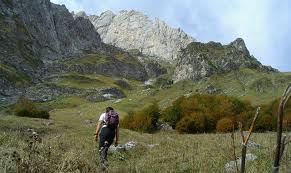 There are not specific facilities in the Monti della Laga area, but the trails are marked. A noteworthy trail is the one that goes up the Cima della Pietra peak (on Monte Gorzano), which takes approximately three hours to complete.
There are not specific facilities in the Monti della Laga area, but the trails are marked. A noteworthy trail is the one that goes up the Cima della Pietra peak (on Monte Gorzano), which takes approximately three hours to complete. 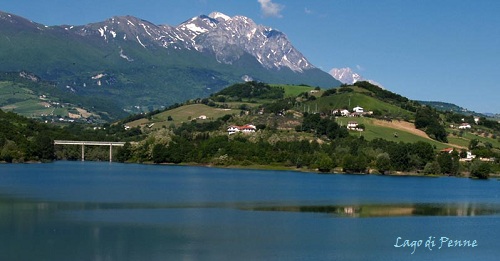

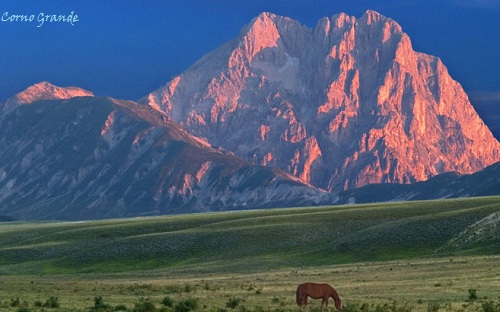
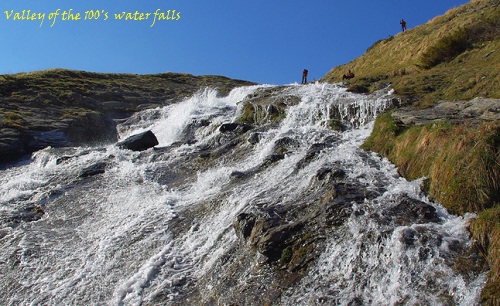
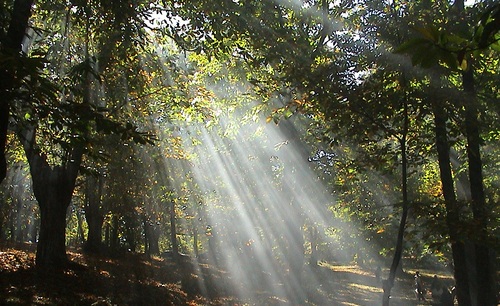
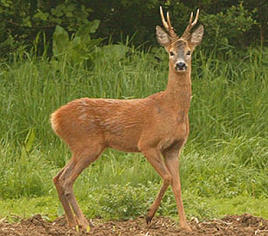 L
L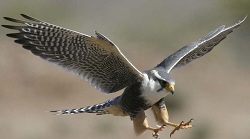 There are a few pairs of Golden eagles and Peregrine falcons, as well as the more common Kestrel and the Buzzard. Other species that can be observed are the Nuthatch, the Snowfinch, the Rock partridge, the Rock pipit and the Alpine accentor. Reptile and amphibian life includes the Hydromantes italicus, a newt living in caves, and the Alpine newt (in the glacial lake of the Pannicaro in Laga) and the Meadow viper, as well as the Common frog.
There are a few pairs of Golden eagles and Peregrine falcons, as well as the more common Kestrel and the Buzzard. Other species that can be observed are the Nuthatch, the Snowfinch, the Rock partridge, the Rock pipit and the Alpine accentor. Reptile and amphibian life includes the Hydromantes italicus, a newt living in caves, and the Alpine newt (in the glacial lake of the Pannicaro in Laga) and the Meadow viper, as well as the Common frog.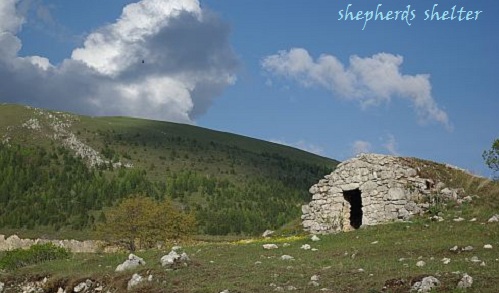
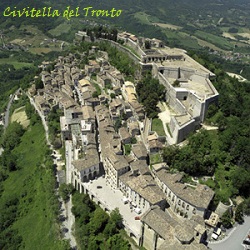 The neighbourhood villages of Assergi, Castel del Monte, S. Stefano in Sessanio, Pietracamela, Castelli and Civitella del Tronto offer the visitor a characteristic urban structure, entirely built out of local stone, with narrow streets and tortuous stairways, highlighting the deep connection with the environment and the need to maintain control over the territory.
The neighbourhood villages of Assergi, Castel del Monte, S. Stefano in Sessanio, Pietracamela, Castelli and Civitella del Tronto offer the visitor a characteristic urban structure, entirely built out of local stone, with narrow streets and tortuous stairways, highlighting the deep connection with the environment and the need to maintain control over the territory. 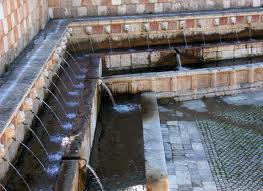 In L'Aquila, the Fountain of the 99 waterpipes is famous, as it is the Basilica of S. Maria di Collemaggio, a masterpiece of Romanesque-Gothic architecture in Abruzzo, and the Church of San Bernardino. Other medieval artefacts include the many castles and monastry built between the 9th and 12th centuries, such as Rocca Calascio and the monasteries of S.Pietro ad Oratorium.
In L'Aquila, the Fountain of the 99 waterpipes is famous, as it is the Basilica of S. Maria di Collemaggio, a masterpiece of Romanesque-Gothic architecture in Abruzzo, and the Church of San Bernardino. Other medieval artefacts include the many castles and monastry built between the 9th and 12th centuries, such as Rocca Calascio and the monasteries of S.Pietro ad Oratorium. 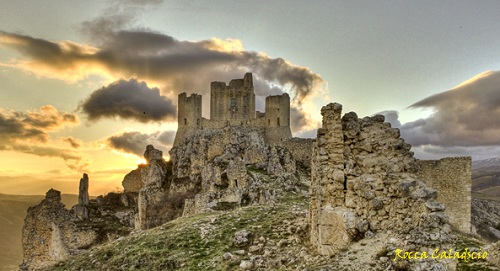
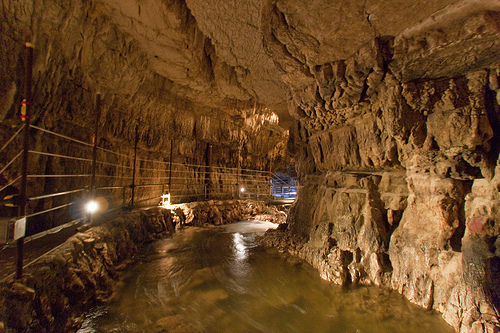
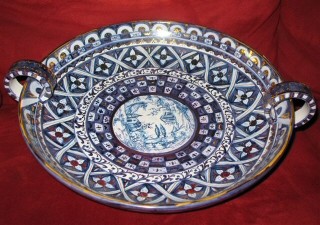 Typical Products and Craft work: Numerous towns are located within the Park; it is therefore very difficult to provide a complete list of all the different local handmade products. Focusing on the three regions: the Marche are known for their lace and weavings as well as musical instruments; Abruzzo is known for ceramics, copper products, lace and leather goods; Rieti (Lazio) is known for its lace and textile production as well as its woodwork.
Typical Products and Craft work: Numerous towns are located within the Park; it is therefore very difficult to provide a complete list of all the different local handmade products. Focusing on the three regions: the Marche are known for their lace and weavings as well as musical instruments; Abruzzo is known for ceramics, copper products, lace and leather goods; Rieti (Lazio) is known for its lace and textile production as well as its woodwork.  The Laga area has Grisciano di Accumoli beans, various varieties of chestnuts including the Marrone di Valle Castellana and the Amatrice, as well as the nzita and pallante from the Marche regions. An antique and well-known kind of pork cold cut is also typical to the region, known as the mortadelline di Campotosto.
The Laga area has Grisciano di Accumoli beans, various varieties of chestnuts including the Marrone di Valle Castellana and the Amatrice, as well as the nzita and pallante from the Marche regions. An antique and well-known kind of pork cold cut is also typical to the region, known as the mortadelline di Campotosto.